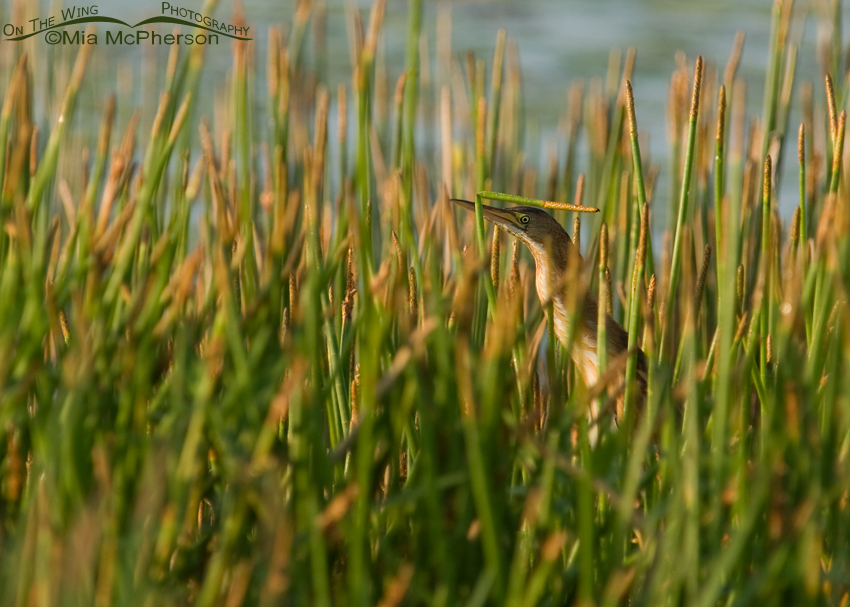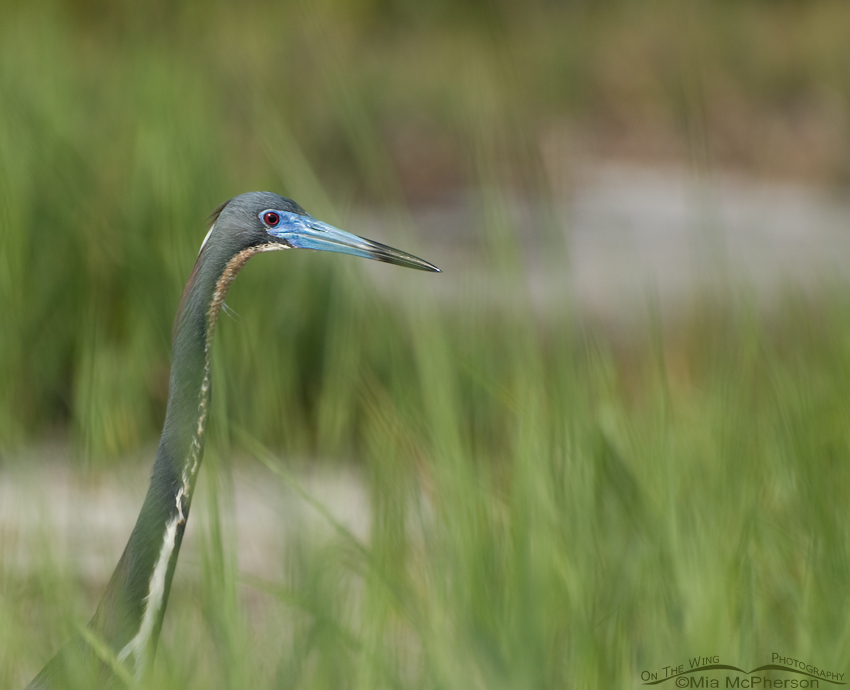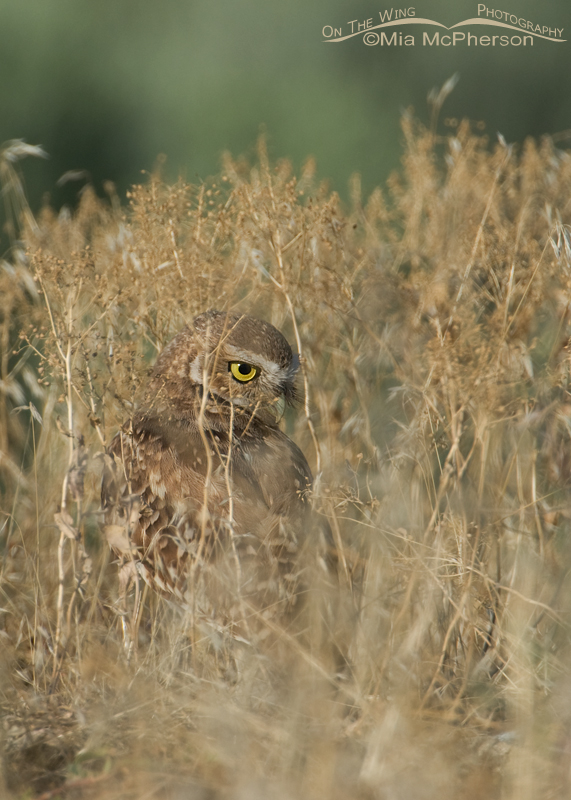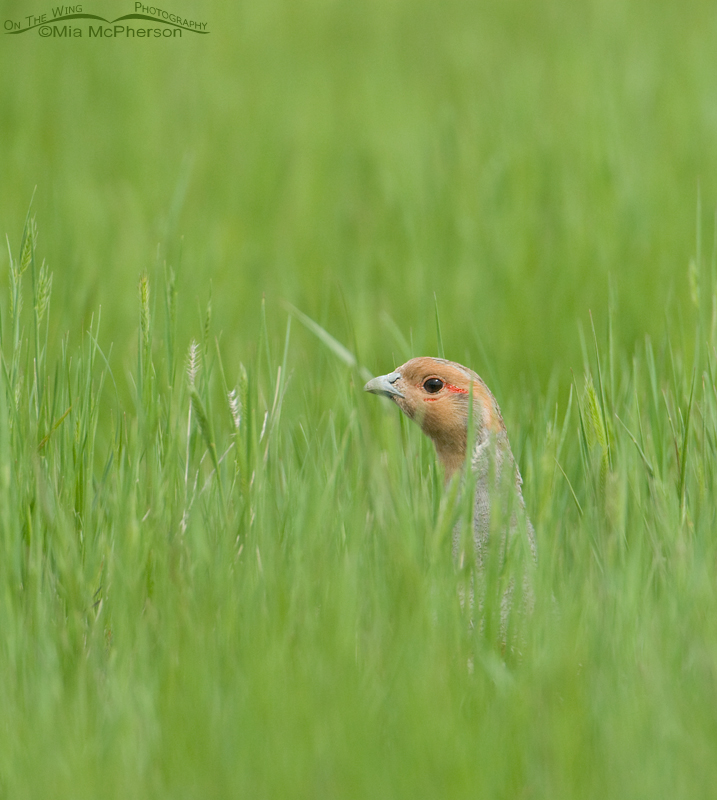 Least Bittern in a wetlands – Roosevelt County Wetlands, Pinellas County, Florida
Least Bittern in a wetlands – Roosevelt County Wetlands, Pinellas County, Florida
D200, HH, f6.3, 1/200, ISO 250, 80-400mm at 400mm, natural light
As a bird photographer I often strive for images where the subjects are out in the open, without distractions in the fore or background, but as with any photographic “rule”, they are made to be broken. There are times when a “hidden treasure” can be very appealing.
Least Bitterns (Ixobrychus exilis) are illusive birds, you’ll most often see them in amongst reeds, cattails, rushes or long grasses on the shorelines of freshwater lakes, ponds and wetlands. With their plumage patterns and coloring it is often difficult to see them when they are hidden in the vegetation. I took this image knowing that the bittern wasn’t out in the open but I still think it has appeal.
 Tricolored Heron in Spartina – Fort De Soto County Park, Pinellas County, Florida
Tricolored Heron in Spartina – Fort De Soto County Park, Pinellas County, Florida
D200, handheld, f6.3, 1/250, ISO 200, 70-300mm VR at 300mm, natural light
I was sitting in the water of a shallow lagoon at Fort De Soto’s north beach photographing some shorebirds when I noticed this Tricolored Heron (Egretta tricolor) making its way towards me through the Spartina on the shoreline. Even though at this point I knew I would not have a clear view of the heron I took images anyway thinking that the grasses would be out of focus enough to not be distracting. I liked how this image turned out.
 Juvenile Burrowing Owl in dried grasses – Antelope Island State Park, Utah
Juvenile Burrowing Owl in dried grasses – Antelope Island State Park, Utah
D200, f7.1, 1/750, ISO 250, 200-400mm VR with 1.4x TC at 400mm, natural light
The juvenile Burrowing Owl (Athene cunicularia) above was one of four chicks in the brood at this location, its siblings were in more in the clear than this juvenile was but I liked the color of the dried vegetation, the lacy patterns the plant material created and how the bird’s face was basically in the clear so I took several shots of it before turning my lens back to the other owls. The green tones in the background compliment the warm tones of the burrowing owl and the dried plant material.
 Gray Partridge in grasses – Glacier County, Montana
Gray Partridge in grasses – Glacier County, Montana
D200, f6.3, 1/750, ISO 500, 200-400mm VR with 1.4x TC at 400mm, natural light
Gray Partridges (Perdix perdix) are not native to North America. They were introduced to North America in the later part of the 18th century and after repeated introductions some populations survived and the populations have become stable. Glacier County, Montana has a mixture of agricultural and fallow fields that the gray partridges seem to thrive in and that is where I saw this partridge walking through some grasses.
Ideally I would have liked to have shown the entire body of the bird without any obstructions in front it it but in this case this is where; and probably more importantly, how this species is often seen in the wild.
For me this image works because of the clear view of the partridge’s head & eye, how the grasses on the same focal place show some sharpness and fine detail in the seedheads and because the other grasses in the fore & background are out of focus.
Images like these aren’t always appealing to others but I find them compelling in their own way. Since the size of my portfolio is only limited by the size of my hard drives I often take photos where I think there is potential even where I know I might be bending or breaking some rules.
Mia


I think these are great images! It’s closer to what you see while birding (or at least it is for me – I get way more “heads in grass” views than I do looks at the whole bird!) and your photos have a lovely, intimate feel to them.